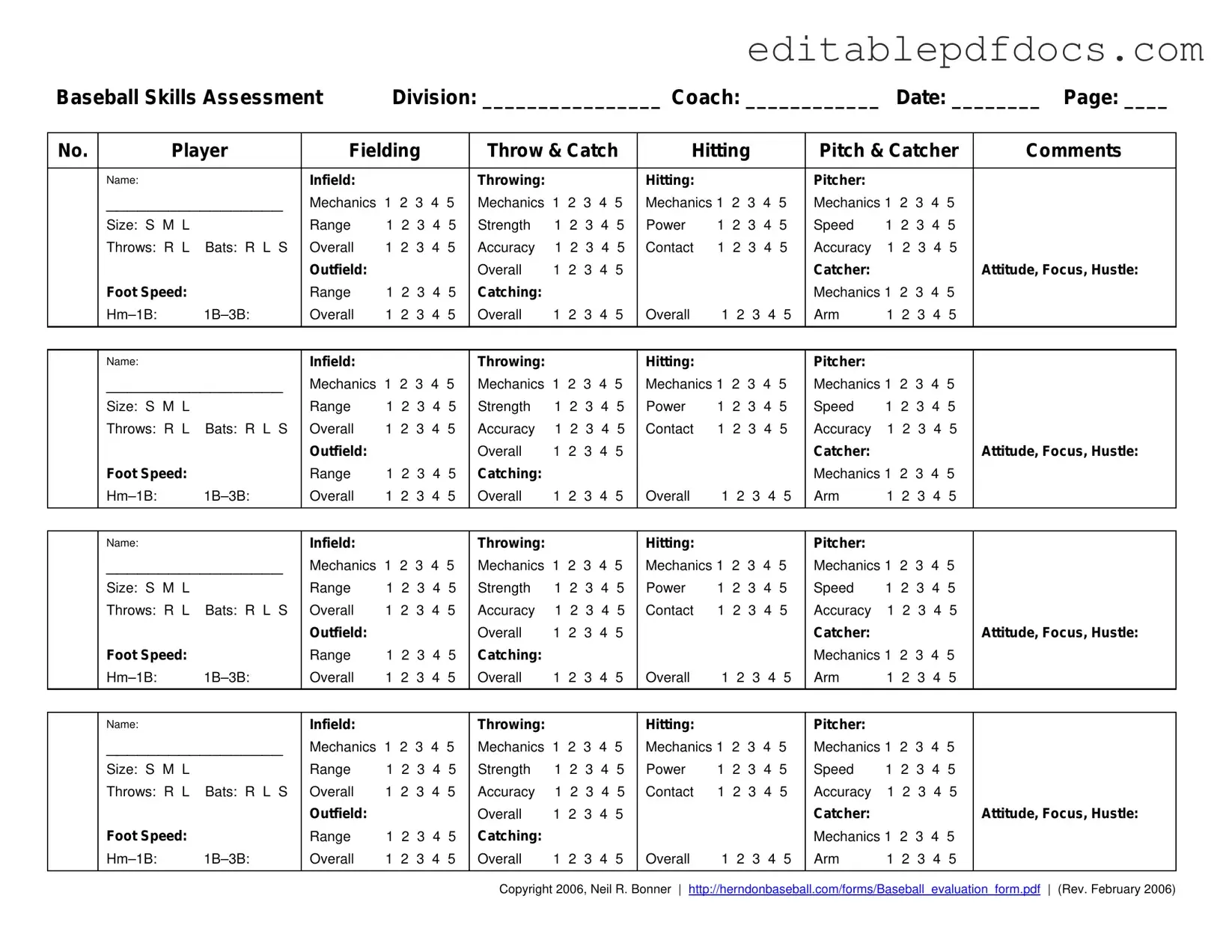Filling out the Baseball Assessment form can be a straightforward process, but several common mistakes often occur. One frequent error is neglecting to provide complete player information at the top of the form. Coaches require details such as the player’s name, the division, and the date to ensure proper identification and tracking. Incomplete information may lead to confusion during evaluations.
Another mistake involves failing to use the scoring system correctly. The form employs a five-point scale, but some evaluators may not adhere to it consistently. For instance, awarding a score of three when a player clearly demonstrates exceptional skills can misrepresent their abilities. Accurate scoring is essential for fair evaluations.
Some individuals overlook the importance of comments in the assessment. The comments section allows evaluators to provide qualitative feedback that scores alone cannot convey. Without this context, the assessment may lack depth, making it difficult for coaches to understand the nuances of a player’s performance.
Additionally, evaluators sometimes forget to assess all categories. The form includes various skills such as fielding, throwing, and hitting, but some may focus only on one or two areas. This oversight can result in an incomplete evaluation, failing to capture a player’s overall capabilities.
Another common error is not considering a player’s attitude and hustle. While technical skills are important, a player’s approach to the game can significantly impact their performance. Ignoring this aspect may lead to overlooking valuable team dynamics.
Inconsistent use of terminology can also cause confusion. For example, using terms like “mechanics” without clarifying what specific aspects are being evaluated may lead to varied interpretations among different evaluators. Clear communication is vital for consistency.
Some evaluators may rush through the assessment process, particularly during timed drills. This hurried approach can lead to inaccurate scores, as players may not perform to their full potential under time constraints. Taking the time to observe and evaluate each player carefully is crucial.
Another mistake is failing to adjust scores based on observed performance during drills. Coaches should be flexible and willing to modify scores based on real-time observations, rather than sticking rigidly to preconceived notions of a player’s abilities.
Finally, evaluators might not discuss their scoring with other coaches. Collaboration and communication among evaluators can help ensure a more comprehensive and balanced assessment of each player. Sharing insights and perspectives can lead to a more accurate overall evaluation.
